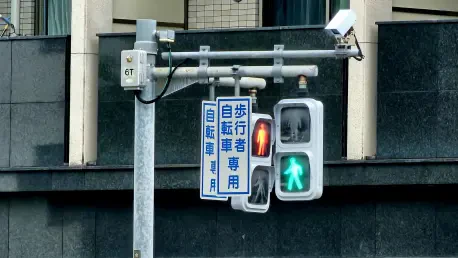I’m thrilled to sit down with Marco Gaietti, a veteran in business management with decades of experience in strategic operations and technology integration. Today, we’re diving into the innovative world of lift truck safety, focusing on the groundbreaking pedestrian awareness camera system recently introduced by Yale Lift Truck Technologies. Marco brings a wealth of insight into how such technologies can transform warehouse safety and efficiency. Our conversation explores the inspiration behind this system, its standout features, how it supports operators, and the future of safety tech in industrial environments.
How did the idea for the pedestrian awareness camera system come about, and what specific challenges in warehouse safety were you aiming to address?
Well, Richard, the core inspiration came from a pressing need to enhance operator awareness in busy warehouse environments. With the rise of transient labor and inexperienced operators, we saw a growing risk of pedestrian-related incidents. Warehouses are dynamic spaces—people and machines are constantly in motion, often in tight quarters. We wanted to create a solution that acts as an extra set of eyes, helping operators detect pedestrians early and avoid potential accidents. It’s about building a safer workplace while supporting the realities of modern labor challenges.
Can you walk us through the key features of this camera system and how they contribute to safety?
Absolutely. The system is designed to detect pedestrians up to 6 meters away with a wide 120-degree field of view, which covers a significant area around the lift truck. It’s built to adapt to various conditions, like low light, which is common in warehouses. This adaptability ensures consistent performance regardless of the environment. The camera feeds real-time data to the operator through alerts, making sure they’re aware of any nearby pedestrians, even in challenging settings. It’s a robust tool that prioritizes safety without overwhelming the operator.
What happens when the system detects a pedestrian, and how do the alerts help operators respond effectively?
When a pedestrian is detected, the system triggers a combination of audible and visual alerts. There’s a distinct tone that grabs attention, paired with a light on the truck-mounted LED display that shows the specific zone where the pedestrian is located. This zoned feedback helps the operator quickly pinpoint the direction of the hazard. For added impact, we offer optional traction alerts, which create a subtle deceleration effect. It’s a tactile cue that nudges the operator to slow down or adjust their path while keeping them fully in control. It’s all about prompting a timely reaction without taking over.
How does this technology support operators with different levels of experience, especially those who are new to the job?
That’s a critical aspect of the design. For newer operators, who might not yet have the instincts or spatial awareness of seasoned pros, the system acts as a safety net. It provides immediate feedback on potential hazards they might miss. But it’s not just for beginners—even experienced operators benefit from the added layer of awareness, especially in high-traffic or chaotic environments. Importantly, the system doesn’t override the operator’s control; it’s there to assist, not to dictate. This balance builds confidence across all skill levels without disrupting workflow.
Why was the system optimized for lower travel speeds, and how does that impact its effectiveness in a warehouse setting?
We optimized the system for speeds of 8 kilometers per hour or less because that’s where most close encounters happen in warehouses. At these speeds, operators have enough time to process alerts and react—whether that’s slowing down, stopping, or steering clear. Higher speed options are available, but the system’s precision and reaction window are most effective at lower speeds, where the risk of pedestrian contact is often highest. It’s about maximizing the window for safe decision-making in those critical moments.
Can you share some insights into how the system was developed and tested to ensure it works reliably in real-world conditions?
Certainly. The development process relied heavily on real-world photographic data to train the system’s detection capabilities. We gathered extensive imagery from actual warehouse settings to ensure the camera could accurately identify pedestrians under diverse conditions. Testing was rigorous—we simulated countless scenarios, from crowded aisles to dim lighting, to fine-tune reliability. Our goal was to replicate the unpredictability of a live warehouse so that when the system is deployed, it performs seamlessly, no matter the situation.
What led to the decision to mount the camera on the rear, forks-trailing side of the lift truck, and how does that positioning enhance safety?
Positioning the camera on the rear, forks-trailing side was a strategic choice. This area often has blind spots for operators, especially when they’re focused on the load or navigating tight spaces. Mounting it here maximizes visibility in a high-risk zone where pedestrians might approach unnoticed. It ensures the system captures a critical field of view, alerting operators to potential hazards behind them. This placement directly tackles one of the most common areas for accidents, enhancing overall safety.
Looking ahead, what’s your forecast for the future of operator assist technologies in warehouse environments?
I’m very optimistic about where this is headed. We’re just scratching the surface with systems like the pedestrian awareness camera. In the coming years, I expect to see even deeper integration of artificial intelligence and machine learning, allowing systems to predict hazards before they even happen. We’ll likely see more seamless connectivity between equipment and warehouse management systems, creating a holistic safety network. The focus will remain on empowering operators—giving them tools to work smarter and safer—while adapting to evolving challenges like labor shortages and increasing automation. It’s an exciting time for innovation in this space.









